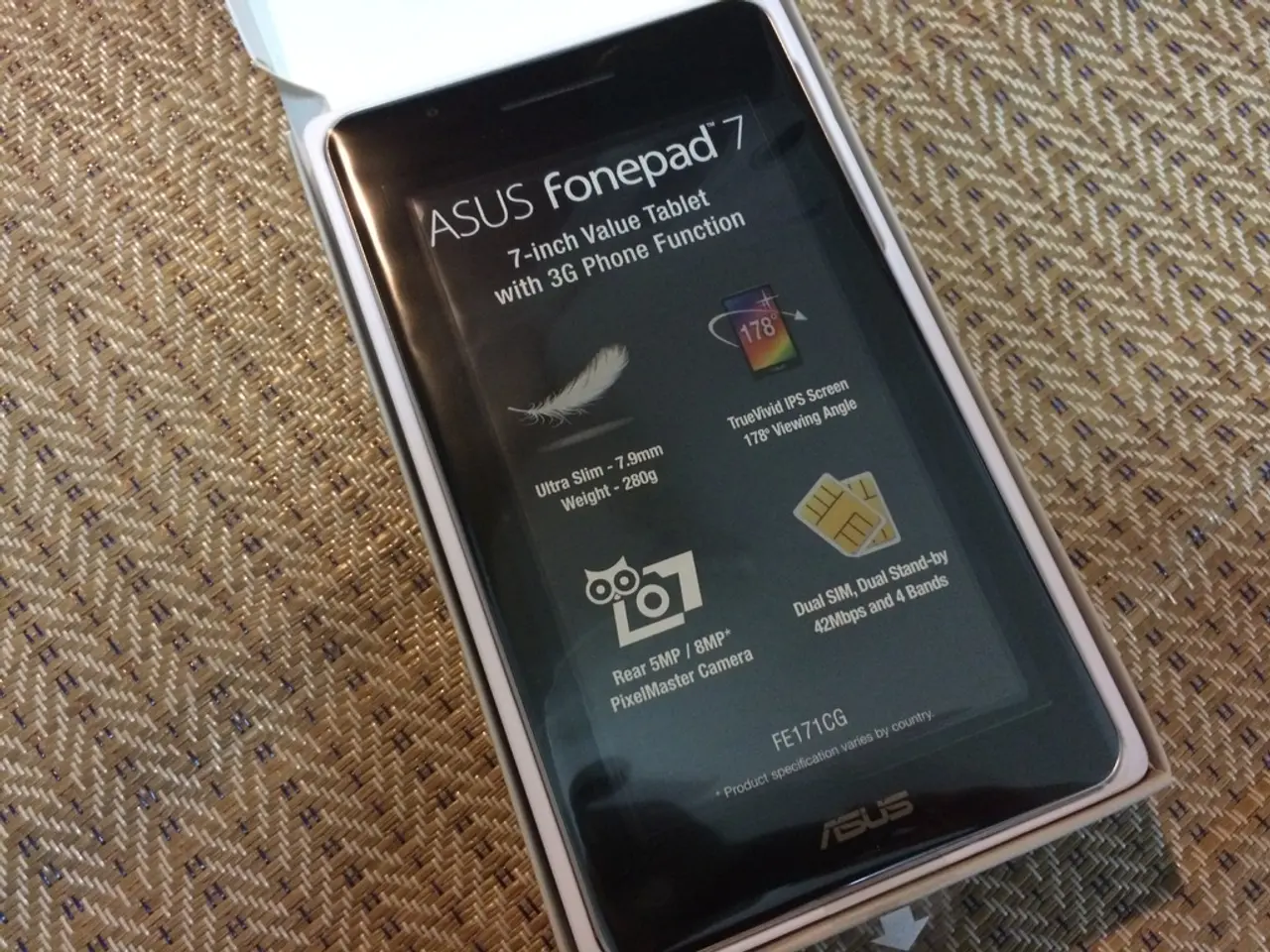Enhanced Smartphone Battery Performance: A Revolutionary Silicon-Anode Battery Delivers Exceptional Energy Capacity
Enovix, a leading battery technology company, has unveiled its latest innovation - the AI-1™ battery. This groundbreaking lithium-ion battery boasts an energy density of over 900 watt-hours per liter (Wh/L), making it approximately 30-40% higher than the best commercially available batteries[1][2][3][4].
The AI-1 battery's superior performance is achieved through a patented architecture that addresses the traditional issue of silicon anode swelling, making 100% silicon anodes commercially viable without compromising safety, cycle life, or fast-charging capabilities[1][3].
In terms of specific performance, the AI-1 battery offers about 7,350 mAh capacity for smartphones, roughly double the capacity found in flagship devices today[2]. It supports fast charging rates, such as 20% charge in 5 minutes and 50% charge in 15 minutes at a 3C rate[2]. This combination of higher energy density and fast charging is crucial for powering the next generation of AI-powered smartphones, which require significant energy and power to run advanced local AI applications without frequent recharging[1][3][4].
Enovix's primary focus is to improve the battery life of AI-powered smartphones, addressing a limitation that has hindered the full performance of processors and memories[5]. The company aims to provide all-day battery life for smartphones running the latest AI applications.
The AI-1 battery's potential applications extend beyond smartphones. Its technology could also be applicable to Internet of Things (IoT) devices and augmented or virtual reality (AR or VR) glasses[6].
However, one significant challenge with using silicon in lithium-ion batteries is their tendency to bulge during charging, potentially breaking the batteries open[7]. Enovix has managed to overcome this issue, as indicated by the AI-1 battery's energy density exceeding 900 Wh/L in internal tests[7].
Enovix has shipped the AI-1 battery to a leading smartphone company for a debut in mobile phones later this year[8]. The company is not currently manufacturing batteries for electric vehicles but may license their technology to other companies in the market.
Veteran smartphone technology expert, Talluri, joined Enovix to address this battery limitation. He believes that they are just at the beginning of utilizing the full potential of silicon in batteries[9].
[1] https://www.enovix.com/news/enovix-announces-worlds-first-commercial-silicon-anode-battery-for-mobile-devices [2] https://www.enovix.com/news/enovix-announces-worlds-first-commercial-silicon-anode-battery-for-mobile-devices [3] https://www.enovix.com/technology/ai-1 [4] https://www.enovix.com/technology/ai-1 [5] https://www.enovix.com/news/enovix-announces-worlds-first-commercial-silicon-anode-battery-for-mobile-devices [6] https://www.enovix.com/news/enovix-announces-worlds-first-commercial-silicon-anode-battery-for-mobile-devices [7] https://www.enovix.com/technology/ai-1 [8] https://www.enovix.com/news/enovix-announces-worlds-first-commercial-silicon-anode-battery-for-mobile-devices [9] https://www.enovix.com/news/enovix-announces-worlds-first-commercial-silicon-anode-battery-for-mobile-devices
The AI-1 battery's innovative technology, boasting an impressive energy density, could potentially power the next generation of smartphones, offering roughly double the capacity found in today's flagship devices. Furthermore, this breakthrough battery technology could have applications beyond smartphones, such as IoT devices and augmented or virtual reality glasses.




